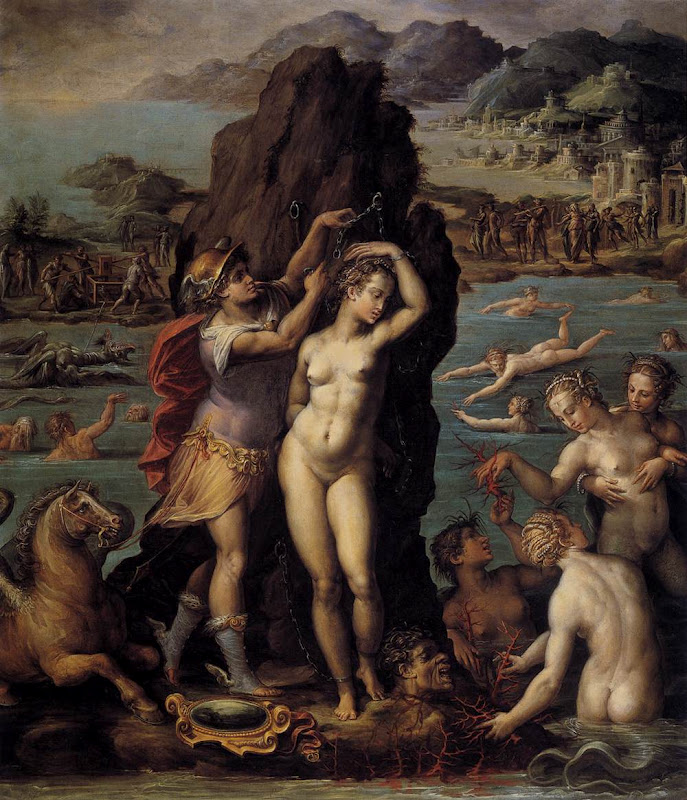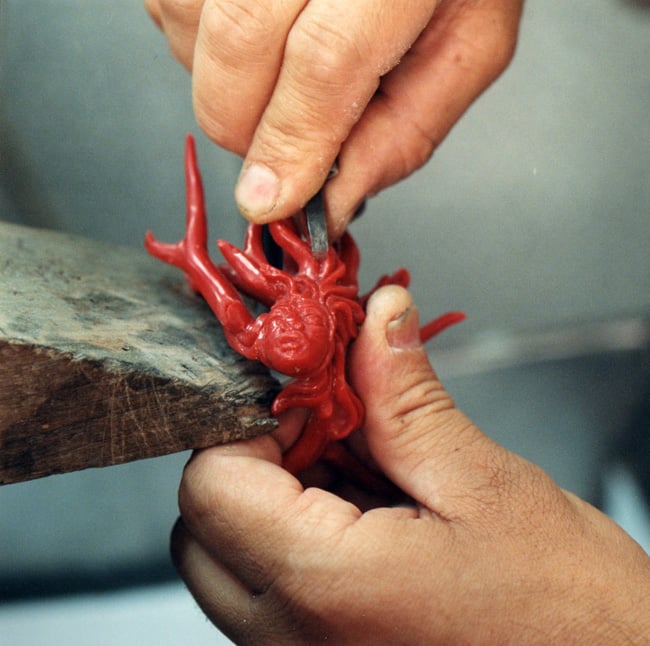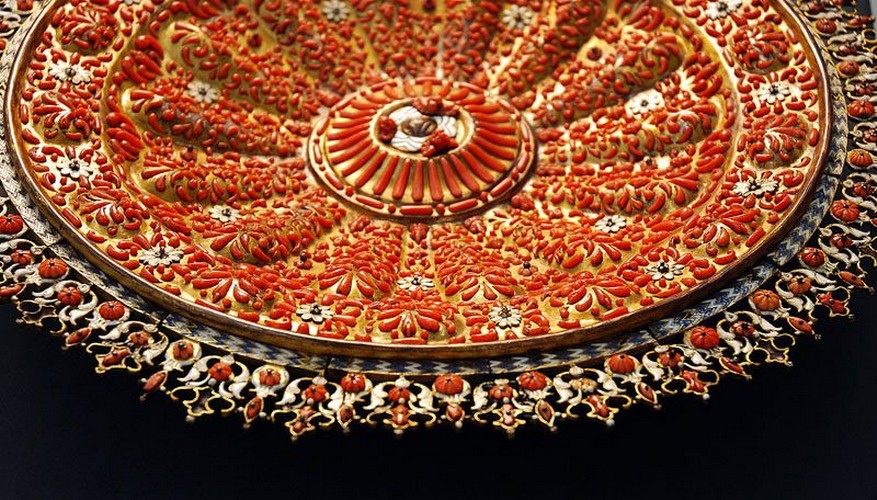MEDITERRANEA CREATURA - HISTORY
The scientific name of the red coral of the Mediterraneum is 'Corallium Rubrum' for its unique red colouration.
Corals play an important role in the aquatic (and non aquatic) ecosystem, as they constitute the habitat of the diverse marine population hosted in the many reefs around the world. They are also considered a thermometer of the health of the marine ecosystem for their necessity to live in the purest waters.
Red corals have a self grown exoskeleton made of calcium carbonate that grows from two to four millimetres per year, within it multiple polyps compose the singular identity of the coral animal. These polyps feed the coral by processing the vegetal food they capture (plankton) through their tentacles, the nutrients help to build the exoskeleton. For these reasons, it is said that corals have a triple nature: animal, vegetal and stone.

• Red coral – Mediterranean Sea
A terrible loss in the coral population has been recorded worldwide in the last four decades, the reason for this it is to find in the human factor: human practices, are causing water pollution, toxicity and eutrophication that are exterminating coral reefs worldwide.
The story of the Corallium Rubrum, compared to other corals, is very peculiar and deeply intertwined with culture, politics, religion, and magic.Since the time when the Greek civilisation dominated the Mediterranean Sea, this fascinating material was harvested to create exquisite and exclusive artefacts.
The most ancient civilisation crafted coral objects used to be worn as symbols of status, for its attributed apotropaic properties, the red coral was worn as a protection from evil or used as a thaumaturgic powder.
The Greek mythology attributed the birth of the red coral to the blood spilled from the decapitated head of the gorgon Medusa (see on the right 'La Nascita del Corallo' by Giorgio Vasari, 1570, Firenze, Palazzo Vecchio, Studiolo di Francesco I).

Historically, the red coral was harvested by different fleets operating in the Mediterranean on account of different lords, kings and popes. The boats were equipped with destructive tools called 'ingegnium' used for trawling down to around 200 metres in the depths of the sea, where the corals thrive.
In 1994 the European Union forbade the indiscriminate collection of corals, and today only a restricted number of divers with a licence are allowed to harvest a limited quantity per year.

An Ancient Craft
A very old tradition of coral carving exist in the Mediterranean, but two are the cities with the strongest and oldest history of the craft: Torre del Greco in Campania and Trapani in Sicily.
The Sicilian craft (and its aesthetic) relies for its language on the culture and subculture of the sea by which the island is defined. The Sicilian 'corallai', the craftsmen who work this medium, were organised in a recognised social guild to which it was very
difficult to access due to the need of mastering the crafts of gold smithing, sculpture, engraving and hand drawing at the same time.
Platimiro Fiorenza, the last of the corallai in Trapani (whose hands you see on the left) has been nominated 'human living heritage' from the UNESCO.



